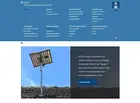At the Yale School of Management cases come in two “flavors”: raw and cooked. "Cooked" cases are how we refer to the traditional management case study format, a document consisting of 5,000 to 10,000 words with a variety of exhibits at the end. "Raw" cases are delivered online as websites that can include text, photographs, videos, documents, spreadsheets, charts and data visualizations, articles, and links, all of which may be accessed in a non-linear fashion.
Raw Cases
In 2007, the SOM faculty and CRDT began experimenting with using multimedia on the web to deliver case materials. These experiments led to an entirely new paradigm, the raw case, that improved upon the traditional case method and afforded new pedagogical opportunities.
Raw cases replicate the way that individuals access and use information in the real world: management dilemmas do not manifest themselves in neat 10–15 page narratives, but rely on an individual’s ability to synthesize information from a variety of channels. The web-based platform also allows students to view, search, absorb, and analyze the material in a non-linear manner. Determining what information is relevant and how it relates to the questions at hand is part of the learning experience. It also allows students to tailor their experience of the case to their own interests, in that they may choose to skim some topics while going into greater depth on other issues.

Consider the SELCO raw case. SELCO is an Indian company that specialized in bringing solar electric products to the poor. In 2009, the company needed a new growth strategy. As students consider the company’s dilemma, the raw case allows them to view video interviews with company leaders and customers, inspect maps of SELCO’s service areas, see videos describing how SELCO’s products were being used, consider articles on India’s electricity grid and socio-economic conditions, read about the company’s founding, consult the company’s organization charts, income statements and balance sheets, inspect the company’s innovative products, review the company’s business models, read news articles about the company’s success, and so on.
Raw cases are also designed to enable faculty to break through the traditionally “siloed” approach to business problems. In the SELCO case, students have to analyze marketing, design, financial, organizational, government relations, and financing problems in the context of a growth strategy. At Yale SOM, raw cases are often co-taught by faculty from different disciplines.
Raw cases contain far more information than cooked cases, requiring longer prep times for both students and instructors. Their non-linear presentation also means that cases often refer to multiple organizational dilemmas, as well as multiple protagonists, allowing for complex analysis and teaching objectives.
Finally, raw cases are good for student study groups, allowing students working in groups to divide responsibilities for what each person will examine and then report back to the group to synthesize everyone’s responses.
Cooked Cases
The Yale School of Management also develops cooked cases, which differ from raw cases in both presentation of material and narrative framework. Cooked cases tend to be written from the point of view of a protagonist, and follow a more linear narrative. Nonetheless, cooked cases can deal with complex problems. They just tend to be more focused than raw cases. This allows for easy categorization of cooked cases and allows instructors to fit them into their syllabus.
Cooked cases are more portable than raw cases. Students can easily print out all of the material, allowing them to read and analyze the problems presented wherever they may want. When printed to paper, cooked cases are also easy to annotate.
However, cooked cases can take on the feeling of being “word problems." Students are told the information that the case writer considers to be relevant to the problem to be solved. The case, itself, provides little additional information about a situation and generally does not allow a student to do further research on a topic.
